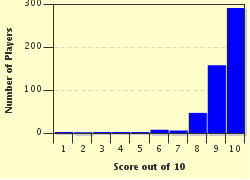Quiz Answer Key and Fun Facts
1. "Leaves of three, let it be" refers to what plant that you shouldn't touch?
2. Snakes are really cool, but some of them are extremely dangerous. No matter where in the world you are, you should avoid disturbing all snakes. Why?
3. Depending on where you are, you may come across spiders. If they're in your home, and are not venomous, what's the best way to get rid of them?
4. There are many plants you can touch, but some should never be put in your mouth. Assuming none have been sprayed with pesticides, which one of the following is usually the safe one?
5. Cool! Your neighbor just got a new dog. How should you greet him?
6. You know about running with scissors, right? Running with any sharp object is not a good idea.
7. What's the best thing to do if you're home alone and you find your clothing is on fire?
8. Labels often have objects or pictures on them which require no language skill as they are primarily well known symbols around the globe. What is a common symbol for a very dangerous or toxic item?
9. You find a curious looking bottle under the sink. It has some liquid in it, but no label. What should you do?
10. There are so many things we can't touch: heavy machinery and power tools we don't know how to handle, hot things like the stove or oven, irons, electric hair curlers. Unless there's an emergency, what should you also not touch?
Source: Author
alexis722
This quiz was reviewed by FunTrivia editor
NatalieW before going online.
Any errors found in FunTrivia content are routinely corrected through our feedback system.

